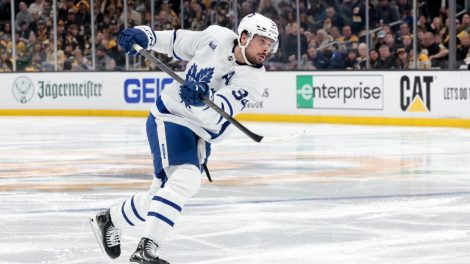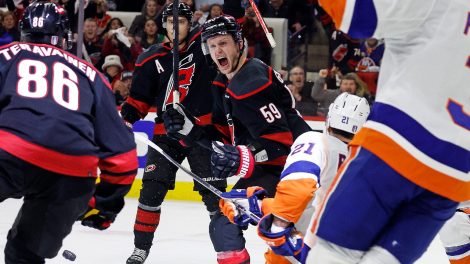Before NHL players are permitted to step back inside a team facility they must first have a swab inserted roughly four centimetres into their nasal cavity.
Laboratory-based RT-PCR testing is used to detect any active or recent infection with COVID-19, and will be administered 48 hours prior.
The next stage of life in the time of the novel coronavirus for players and team staff will then include at least two more of those tests each week, plus daily temperature and symptom checks — one self-administered at home and another from medical personnel upon arrival at the facility.
All of that just to walk through the door.
You want to get on the ice? Well, there’s a pre-participation medical exam, which includes an EKG test and screening for pre-existing conditions, to be administered before that can happen.
What resonates most about the NHL’s return-to-sport protocol is how much meticulous effort will be required just to get six players working out inside the rink together, never mind what’s still to come when teams progress to training camps or actually start playing games again.
The league hopes to reopen team facilities for small-group workouts as soon as next week and has set out the requirements for doing so. The protocol distributed to teams and players early Monday leaves no detail uncovered and paints a scene unlike any that would typically play out in these buildings.
On the ice, no more than six players are allowed to participate in non-contact skates at a time. Coaches, including those for skating and skills, can’t take part (an exception will be granted for goalie coaches after the first week of training).
Off the ice, everyone must remain at least six feet apart and players are discouraged from socializing with one another. A cloth or surgical mask must be worn when entering and exiting the building and at any point where social distancing can’t be maintained. Exercise and weight room equipment is permitted for use, providing a spotter isn’t required, and players can receive individual treatment from athletic therapists and team doctors.
But they won’t be granted access to saunas, hot tubs or steam rooms and are encouraged to shower at home whenever possible.
The groups of six (or less) will remain constant and essentially be assigned a rotating shift for when they’re allowed in the facility. Where possible, teams have been told to assign a different athletic trainer, strength and conditioning coach and equipment manager to each group.
That will ensure any infection or exposure will be contained within the group and should help facilitate contact tracing.
The facility must be thoroughly cleaned and disinfected between each training session. That includes locker-room areas and circuit-based training equipment. Players are required to leave all workout gear inside the facility for cleaning and can only take supplements provided in single-dispense packs.
Single-use beverages or snacks such as power bars can be consumed by players inside the facility, but any meals prepared and packaged by the catering staff must be taken home before they’re eaten.
This promises to be a different experience for players who largely haven’t been back inside team facilities since the season was paused on March 12. The small-group sessions starting in early June are strictly voluntary, but they’re viewed as an important step in trying to complete a 24-team tournament for the Stanley Cup — especially for the large number of guys unable to skate during the last three months.
The detailed nature of protocols being put in place reflect how challenging it is to contain the spread of germs in a team environment, and the NHL acknowledged in its Monday memo that they “cannot mitigate all risk.”
“A range of clinical scenarios exist, from very mild to fatal outcome,” the league wrote.
Anyone who develops symptoms and/or tests positive for COVID-19, or shares a home with someone who does, must immediately notify the team’s medical staff. They will be isolated and provided treatment, if needed.
There could be serious consequences for any teams that don’t comply with the measures put in place by the league. Penalties include fines, loss of draft choices, and ineligibility to participate in the resumption of play.
[relatedlinks]









